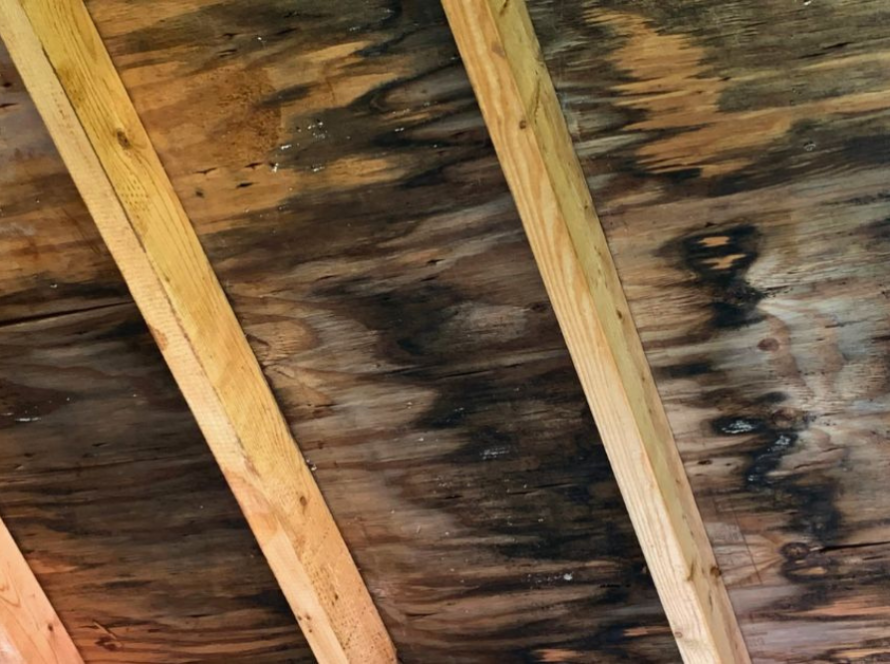Mold, a common fungus found almost everywhere, plays a significant role in the ecosystem by breaking down organic matter. However, when mold growth occurs indoors, it can pose serious health risks and cause damage to property. Identifying different types of mold is crucial for effective remediation and prevention. In this article, we will explore various molds, their characteristics, common locations for growth, and the associated health implications.
Understanding Mold:
Mold is a type of fungus that thrives in moist environments and reproduces by releasing spores. Its tiny spores are airborne and can easily spread, leading to new mold growth in various areas. Understanding mold’s nature is key to controlling its presence.
Common Types of Mold:
- Alternaria: Alternaria is a dark green or brown mold commonly found in damp areas like bathrooms and kitchens. It can trigger allergic reactions and worsen asthma symptoms in susceptible individuals.
- Aspergillus: Aspergillus molds have a powdery texture and come in various colors. They grow on dust and organic materials indoors, especially in HVAC systems. Some Aspergillus species can produce mycotoxins, posing health risks when inhaled.
- Cladosporium: Cladosporium is a black or green mold that grows on damp surfaces like wood and fabrics. It is a common outdoor mold but can also find its way indoors. Exposure to Cladosporium may lead to respiratory issues and skin irritation.
- Penicillium: Often found on water-damaged materials, Penicillium is a blue or green mold. While some species have antibiotic properties, others can cause allergies and respiratory problems.
- Stachybotrys (Black Mold): Black mold is infamous for its dark and slimy appearance. It prefers high-cellulose materials and thrives in extremely damp conditions. Exposure to Stachybotrys can lead to serious health issues, including breathing difficulties and neurological symptoms.
Less Common Types of Mold:
- Fusarium: Fusarium molds are pink, white, or red and typically grow on water-damaged carpets and wallpaper. Certain species can produce mycotoxins that are harmful to humans and animals.
- Aureobasidium: Aureobasidium is a black mold that can be found on painted surfaces, wooden furniture, and wallpaper. It can cause skin and nail infections, especially in immunocompromised individuals.
- Ulocladium: Ulocladium is a black or dark brown mold that grows in wet areas, particularly after flooding or water damage. People with respiratory conditions may experience worsened symptoms when exposed to Ulocladium.
- Trichoderma: Green or white Trichoderma molds can be found on damp building materials. They are known for their aggressive growth and the potential to cause respiratory issues.
- Chaetomium: Chaetomium molds appear cotton-like and change color as they mature. They commonly grow on drywall, paper, and fabrics in water-damaged environments, contributing to a musty odor.
Identifying Mold in Your Environment:
Visual Indicators:
Mold presents itself in various colors and textures, such as fuzzy patches or discolored spots on surfaces. Pay attention to areas with discoloration and visible signs of mold growth.
Musty Odor Detection:
A musty and earthy smell is often associated with mold infestations. If you notice a persistent musty odor, it might indicate mold presence even if it’s not immediately visible.
Conducting Mold Testing:
For accurate mold identification, consider using DIY mold testing kits or hiring a professional mold inspector. Mold testing can help determine the specific types of mold present and their concentration levels.
Assessing Mold-related Health Risks:
Allergic Reactions:
Mold spores can trigger allergic reactions in sensitive individuals, leading to symptoms like sneezing, coughing, and skin rashes.
Respiratory Issues:
Prolonged exposure to mold can cause or exacerbate respiratory problems, such as asthma and bronchitis.
Toxic Mold Syndrome:
Some molds produce mycotoxins that, when inhaled or ingested, can lead to a range of health issues collectively known as toxic mold syndrome. Symptoms may include headaches, fatigue, and memory problems.
Preventing and Managing Mold Growth:
Moisture Control:
Keep indoor humidity levels below 50% to discourage mold growth. Repair leaks and address any water-related issues promptly.
Proper Ventilation:
Ensure proper airflow throughout your home to prevent moisture buildup. Use exhaust fans in areas prone to dampness, like bathrooms and kitchens.
Regular Cleaning and Maintenance:
Regularly clean and dry areas susceptible to mold growth. Use mold-resistant products where possible and promptly address any signs of mold.
Mold-resistant Materials:
Opt for building materials with mold-resistant properties, such as mold-resistant drywall and paints.
DIY Mold Remediation:
Safety Precautions:
When dealing with mold, wear appropriate protective gear, including gloves, masks, and goggles. Avoid direct contact with mold spores.
Small-scale Mold Removal:
For minor mold infestations, use commercial mold cleaners or natural alternatives like vinegar or hydrogen peroxide to clean affected areas thoroughly.
When to Seek Professional Help:
If the mold infestation is extensive or if there are concerns about toxic mold, it is best to enlist the services of a professional mold remediation company.
Conclusion:
Identifying different types of mold is essential for effectively managing mold growth in indoor spaces. Recognizing the visual indicators, musty odors, and conducting mold testing are crucial steps in this process. Understanding the health implications of mold exposure highlights the importance of preventive measures and timely remediation. By adopting proper maintenance practices and promptly addressing moisture issues, homeowners can create a healthier living environment free from mold-related concerns.




